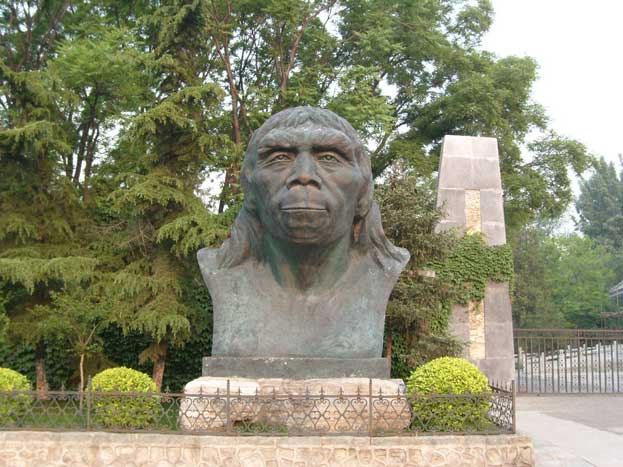Scientific work at the Zhoukoudian Peking Man Site in China lays 42 km south-west of Beijing, is still underway. So far, it has led to the discovery of the remains of Sinanthropus pekinensis, who lived in the Middle Pleistocene, along with various objects, and remains of Homo sapiens sapiens dating as far back as 18,000–11,000 B.C. The site is not only an exceptional reminder of the prehistorical human societies of the Asian continent, but also illustrates the process of evolution.
Peking Man Site at Zhoukoudian
The site at Choukoutien (today Zhoukoudian), located 42 km south-west of Peking (Beijing), was explored as early as 1921 by the Swedish geologist J. G. Anderson. The discovery in the sediment of a cave of hominid teeth and then, in 1926, of a whole skull by the Chinese archaeologist Pei Wen Chung (Pei Wen Zhong) excited universal interest, to which the works of Pierre Teilhard de Chardin contributed notably. The chronology of the beginnings of human history generally accepted until then was overthrown by this discovery, since Sinanthropus pekinensis, or Homo erectus pekinensis, lived in the Middle Pleistocene epoch, 700,000-200,000 years before modern times, had mastered fire, and used a number of chipped stone tools.Successive excavations in and around the cave brought to light a great number of incomplete human bones which, after anthropological study, were shown to belong to 40 different individuals. Some 100,000 objects, essentially rather rough chipped stone tools, numerous traces of domestic hearths, heat-affected stones, burnt bones, ash deposits, etc., as well as fossilized grains, were found. Not far from the main site, a second cave was found to contain remains of Homo sapiens sapiens, dated back to between 18,000 and 11,000 BC, together with a large quantity of other material: necklaces made with teeth, pierced shells and pebbles, bone needles, etc.











No comments:
Post a Comment